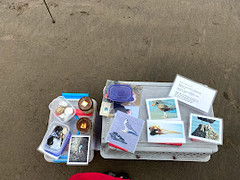The majority of my time this week has gone to revising and finalizing my final report that I have been working on all summer. This is the first time that I have gotten to commit so much time to a project that I am working on independently and as I get closer to being able to submit I feel very proud of all that I accomplished this summer. Coming into this I didn’t really know what to expect but I feel like I have gained very useful skills in being able to read complex research materials and distill them down to be more understandable and consumable by the general public. I have also learned that I care a lot more about environmental education than I previously thought. It gives me a way to utilize both my environmental science and education backgrounds and combining those with my experience of growing up with crisis based environmental education has been so rewarding. This summer has definitely taught me so much about environmental education and virtual learning and I am so thankful that I got to have this experience so early on in my academic career.
As this internship wraps up I have been thinking a lot about what I have gained from this experience. As someone who grew up far away from the coast I never really saw marine conservation as something that I would want to pursue as a career. However, being exposed to so many different career paths and having my first experiences with marine conservation has made me realize that it is something that I would want to pursue in the future.
I am now headed back to the University of Washington to start my sophomore year, and my first year in person on my campus. I am beyond excited to further my knowledge in environmental science and I feel like this experience has solidified the path that I want to take. After getting my degree I think that I might either go to grad school for conservation biology or go to law school to pursue environmental law.






